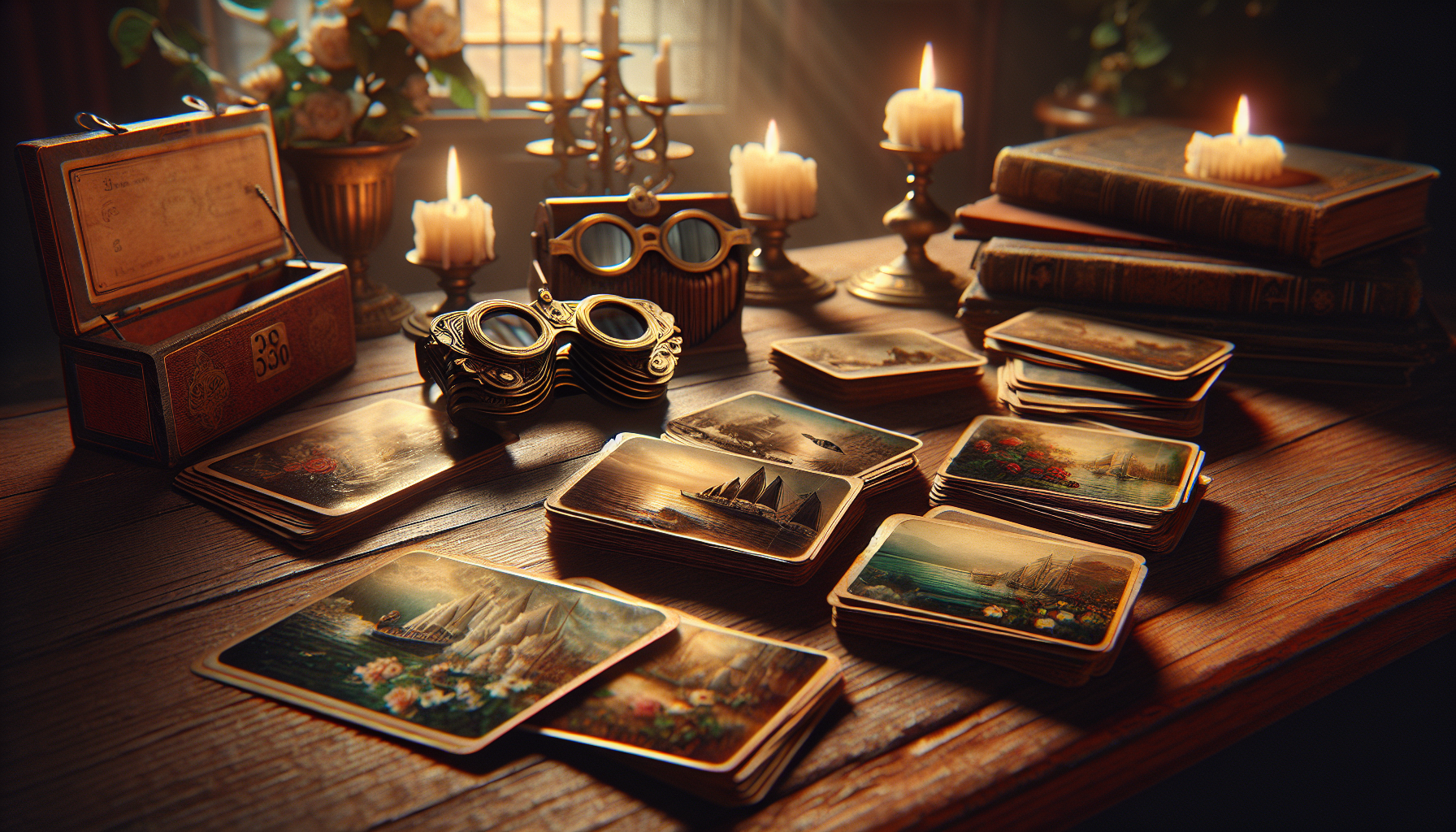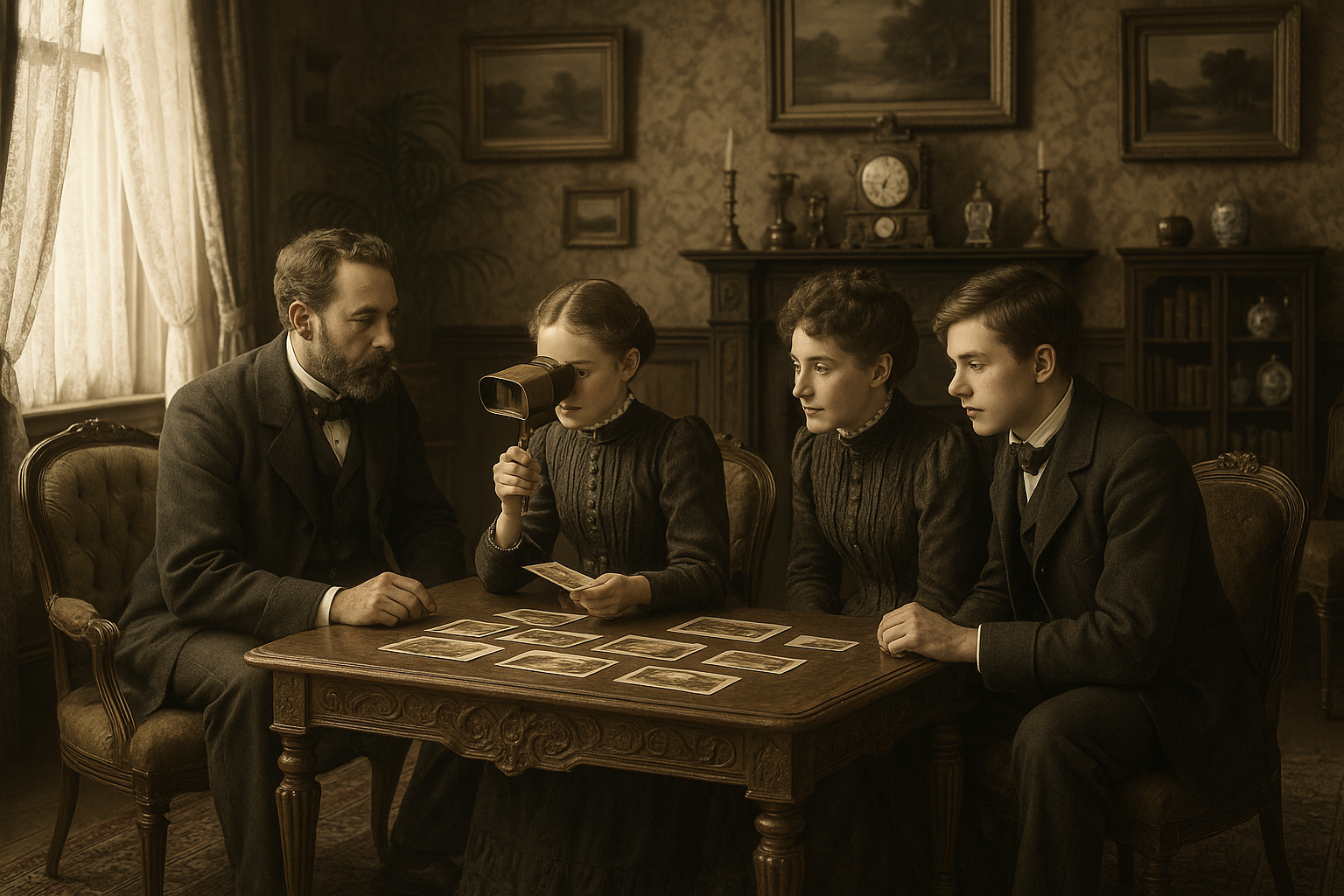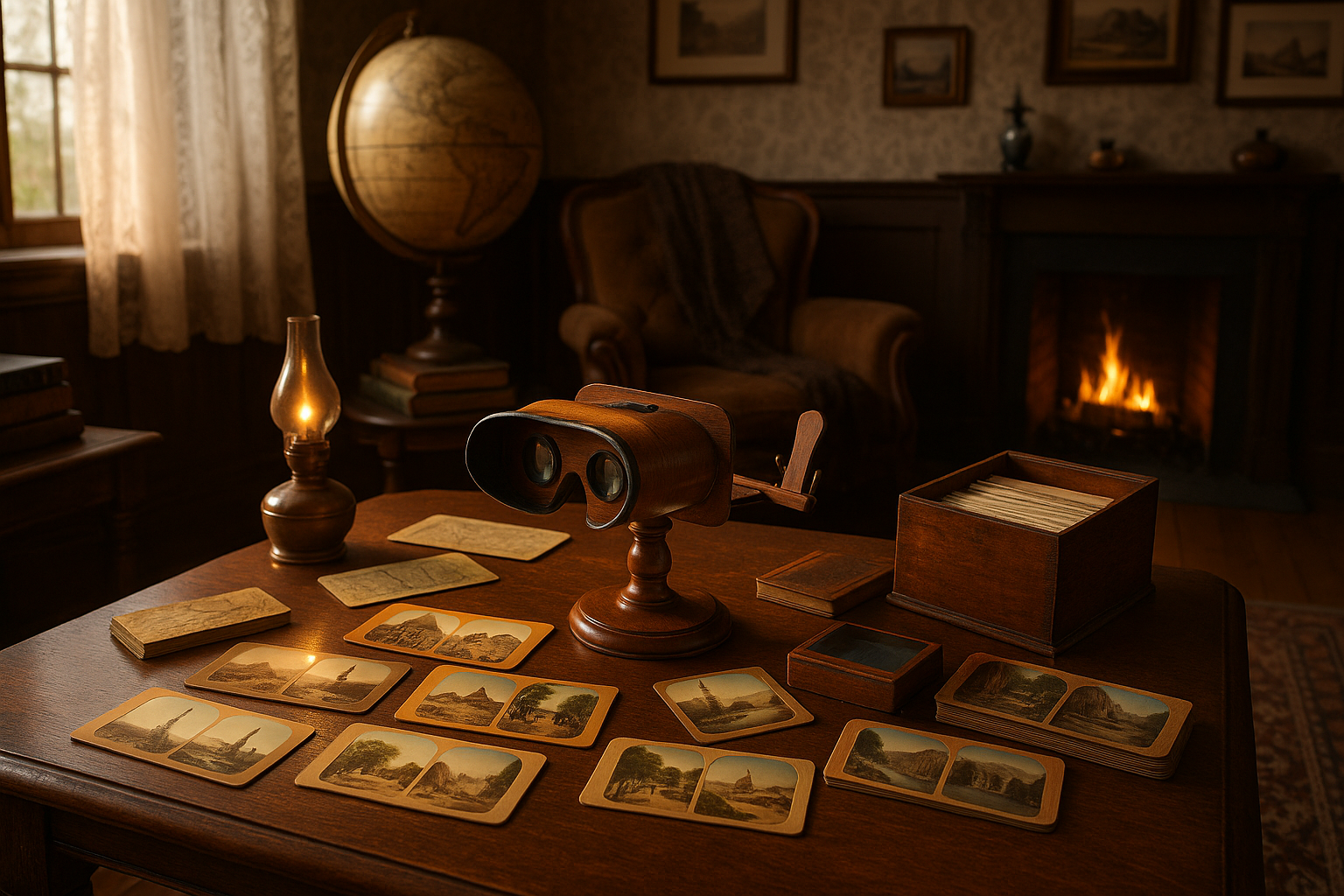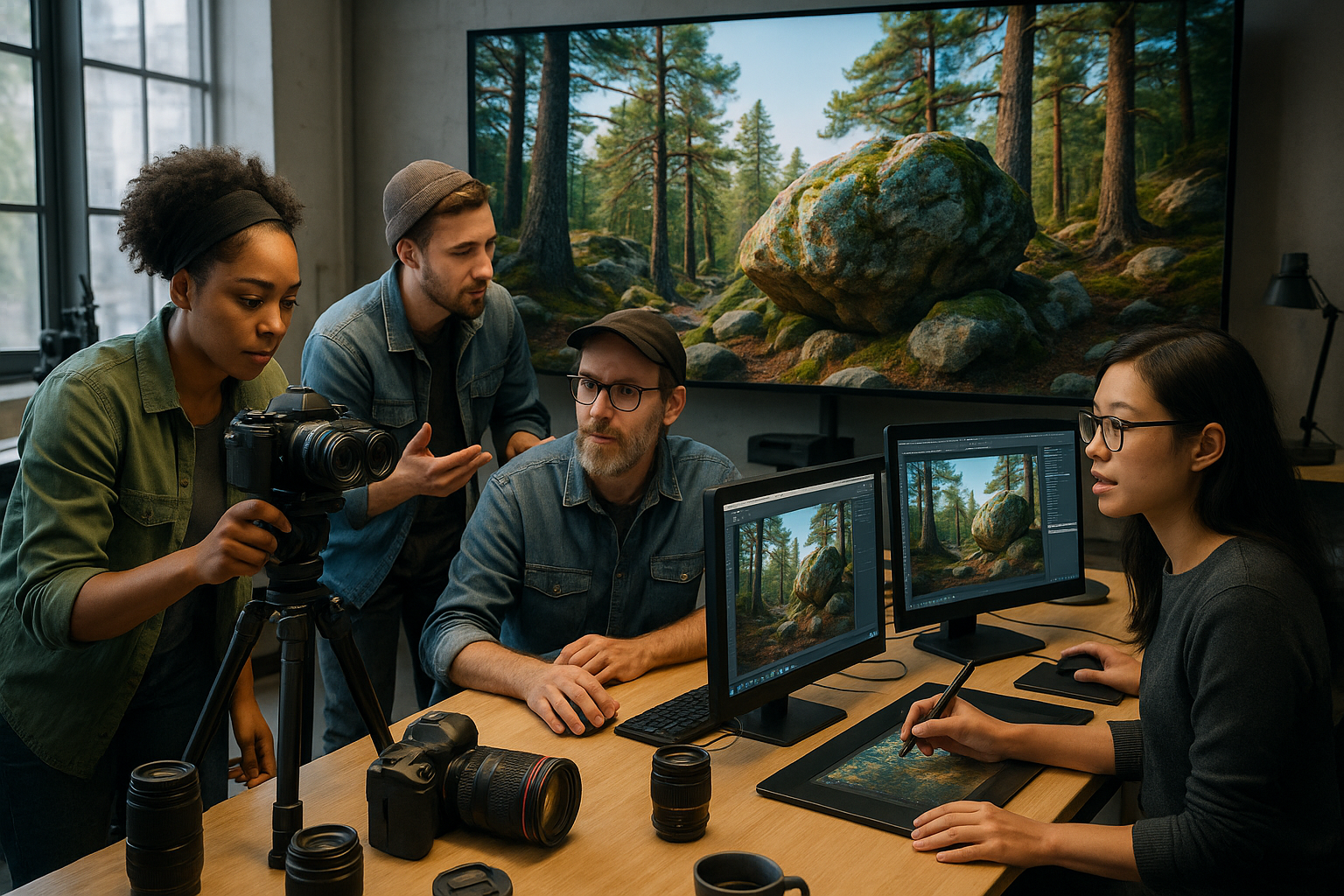In a world increasingly dominated by digital screens and fleeting interactions, there exists a form of art that beckons us to slow down, to gaze a little longer, and to rediscover the joy of wonder and imagination. Welcome to the mesmerizing realm of stereoscopic card art—a world where two-dimensional images come alive, where depth is not just a concept but a vivid experience. This captivating art form transcends the ordinary, inviting us to explore a universe where every card holds a story, every image pulses with life, and every viewing is an adventure in perception. 🌟
Stereoscopic card art, with its roots dating back to the 19th century, has enchanted viewers for generations. Yet, despite its historical significance and visual allure, it remains a somewhat hidden gem in the vast landscape of art and collectibles. Why, you might wonder, should you delve into this niche world? The answer lies in its unique ability to transform how we see and interact with images. Unlike traditional art forms that rely on flat surfaces, stereoscopic cards engage our senses in a dance of light and shadow, offering a three-dimensional experience that is both immersive and enchanting. Whether you’re an art enthusiast, a history buff, or simply someone who appreciates the beauty of craftsmanship, stereoscopic card art offers something special.
In this exploration of stereoscopic card art, we will journey through its rich history, from its origins in Victorian England to its revival in modern times. We will uncover the technical magic behind creating these stunning visuals, demystifying the process that allows a simple card to transport us to another dimension. Moreover, we’ll meet the artists and collectors who have dedicated themselves to preserving and innovating this art form, ensuring its relevance in today’s fast-paced world. As we navigate through these topics, you’ll gain a deeper understanding of why stereoscopic card art continues to captivate and inspire.
By the end of this article, you’ll not only have a newfound appreciation for the artistry and skill involved in creating these masterpieces but also an understanding of how stereoscopic card art fits into the broader tapestry of visual culture. Prepare to be amazed as we step into a world of depth and wonder, a world where magic is not an illusion, but a carefully crafted reality. Whether you’re here to learn, to be inspired, or simply to escape the ordinary, this journey promises to be as enlightening as it is delightful. So, let us open the door to this enchanting universe and explore the magic of stereoscopic card art together. ✨
The Alluring World of Stereoscopic Card Art
The realm of stereoscopic card art is a captivating fusion of technology, artistry, and optical illusion, drawing viewers into a world where images pop and stories unfold in three dimensions. This intriguing art form has been mesmerizing audiences for over a century, yet it remains a relatively underexplored facet of visual art. In this article, we delve into the magic behind stereoscopic card art, exploring its history, the technology that brings it to life, and the endless possibilities it presents for collectors and creators alike. Prepare to embark on a journey through depth and wonder, and discover how these cards transform flat images into living, breathing experiences.
A Glimpse into History
The origins of stereoscopic card art can be traced back to the mid-19th century, when Sir Charles Wheatstone invented the stereoscope. Wheatstone’s device, which used two slightly offset images to create a 3D effect, laid the groundwork for what would become a popular form of entertainment in Victorian society. During this time, stereoscopic cards, also known as stereographs or stereoviews, became all the rage, offering viewers a chance to explore far-off lands, witness historical events, and experience everyday scenes in a new and thrilling way.
As technology advanced, so did the complexity and realism of stereoscopic card art. The introduction of color photography and improved printing techniques in the early 20th century allowed for more vibrant and lifelike images. Collectors eagerly sought out these cards, building vast collections that provided a window into different eras and cultures. While the popularity of stereoscopic cards waned with the advent of other forms of entertainment, such as cinema and television, they have experienced a resurgence in recent years, thanks in part to the nostalgia they evoke and the unique experience they offer.
The Technology Behind the Magic
At the heart of stereoscopic card art lies the principle of binocular vision. Humans naturally perceive depth and dimension because our eyes view the world from slightly different angles. Stereoscopic images mimic this effect by presenting two offset images, one for each eye, which the brain combines into a single, three-dimensional scene. This illusion of depth creates the enchanting and immersive experience that defines stereoscopic card art.
Modern stereoscopic cards utilize various techniques to enhance the 3D effect. Lenticular printing, for example, uses a special lens to create images that shift and change when viewed from different angles. This method can produce stunning depth and motion effects, making the images appear almost alive. Other techniques, such as anaglyph and polarized stereoscopy, use color filters or polarized light to achieve a similar result. Each method has its own unique advantages and challenges, offering artists a rich palette of tools to experiment with.
For a deeper understanding of how stereoscopic images work, check out this informative video: “How Stereoscopy Works” by Science ABC.
Comparing Stereoscopic Techniques
To better understand the nuances of stereoscopic art, let’s compare the various techniques used to create these captivating images. The table below outlines the differences between lenticular, anaglyph, and polarized stereoscopy:
| Technique | Mechanism | Pros | Cons |
|---|---|---|---|
| Lenticular | Uses a lens array to produce depth and motion effects | Dynamic images, vibrant colors | Higher production cost |
| Anaglyph | Uses color filters for each eye | Cost-effective, easy to produce | Color distortion, requires glasses |
| Polarized | Uses polarized light for each eye | Natural color reproduction, high-quality depth | Requires specialized glasses and display |
As you can see, each technique offers a unique way to bring images to life, allowing artists and creators to choose the best method for their vision and audience. Whether it’s the vivid and dynamic effects of lenticular printing or the classic appeal of anaglyph stereoscopy, each approach offers its own brand of magic.
The Artistry and Innovation of Stereoscopic Cards
Beyond the technical aspects, the true magic of stereoscopic card art lies in the creativity and vision of the artists who craft these images. Artists have long been drawn to the challenge of creating compelling narratives and stunning visuals that leap off the card and into the viewer’s imagination. The process involves meticulous planning and execution, as each element must be carefully positioned to maximize the 3D effect.
Innovation plays a crucial role in the evolution of stereoscopic card art. Artists continually push the boundaries of what is possible, experimenting with new techniques and materials to enhance the viewer’s experience. From incorporating interactive elements, such as flaps and pull tabs, to integrating sound and light, the possibilities for creativity are virtually limitless.
For those interested in exploring the artistic side of stereoscopic cards, consider watching this video that delves into the creative process: “The Art of Stereoscopic Images” by Visual Artistry Channel.

Conclusion
Exploring the world of stereoscopic card art offers a unique and mesmerizing journey into a realm where depth and wonder converge to create a truly magical visual experience. Throughout this article, we’ve delved into the history, techniques, and modern applications of this intriguing art form, revealing how it captivates and enchants viewers through its ability to bring images to life in three dimensions.
Stereoscopic card art, with its roots tracing back to the 19th century, has long fascinated audiences by transforming flat images into lifelike scenes with the mere use of a stereoscope. The invention of this art form was a breakthrough in visual storytelling, allowing people to perceive depth and perspective in a way that was previously unimaginable. The meticulous craftsmanship involved in creating these images is a testament to the skill and creativity of the artists who continue to push the boundaries of what is possible in visual art.
In this article, we explored the different techniques used to create stereoscopic card art, from the early hand-drawn images to the sophisticated photographic processes that emerged with the advent of photography. Each method offers a distinct approach to achieving the illusion of depth, showcasing the evolution of the art form over time. The transition from hand-drawn to photographic techniques not only broadened the possibilities of subject matter but also expanded the audience for stereoscopic images, making them more accessible and popular among the general public.
Moreover, we examined the modern applications and resurgence of interest in stereoscopic card art, fueled by advancements in technology and a growing appreciation for vintage aesthetics. Contemporary artists and designers are reimagining this classic art form, integrating it into digital media and virtual reality experiences, thus bridging the gap between the past and the present. This revitalization underscores the enduring appeal and versatility of stereoscopic art in capturing the imagination of new generations.
The cultural and educational significance of stereoscopic card art cannot be overstated. It not only serves as a window into the past, allowing us to experience historical events and locations with a sense of immediacy and realism, but it also provides a valuable tool for education, enhancing our understanding of visual perception and the science of optics. By engaging with stereoscopic images, viewers develop a deeper appreciation for the nuances of perspective and the art of visual storytelling.
As we conclude our exploration of this enchanting art form, it is essential to recognize the broader implications of stereoscopic card art in fostering creativity and innovation. By challenging our perception and encouraging us to see the world from a new perspective, stereoscopic art inspires us to think outside the box and embrace new ways of seeing and experiencing our surroundings. It serves as a reminder of the limitless potential of human creativity and the power of art to transcend boundaries and connect people across time and space.
In light of the enduring appeal and significance of stereoscopic card art, we invite you, our readers, to further explore and appreciate this captivating form of artistic expression. Whether you are an artist, a collector, or simply someone who enjoys the beauty of visual art, there is much to discover and enjoy in the world of stereoscopic images. We encourage you to share your thoughts and experiences with this art form in the comments section below, and to spread the wonder by sharing this article with others who might be intrigued by the magic of stereoscopic card art.
Finally, we urge you to consider how the principles and techniques of stereoscopic art might inspire your own creative endeavors, whether in the realm of visual art, design, or beyond. By embracing the spirit of innovation and exploration that defines stereoscopic card art, you too can step into a world of depth and wonder, creating your own masterpieces that captivate and inspire others. Let us continue to celebrate and preserve this unique art form, ensuring that its magic endures for generations to come.
For further exploration, consider visiting Stereoscopy.com or exploring the collections at institutions such as the Smithsonian Institution and the National Stereoscopic Association, where you can find a wealth of resources and examples of stereoscopic card art that continue to captivate and inspire.
Toni Santos is a visual historian and artisan whose creative lens is captivated by the forgotten marvels of antique optical devices. Through his thoughtful storytelling, Toni revives the instruments that once transformed light into wonder—camera obscuras, magic lanterns, kaleidoscopes, and other ingenious tools that shaped our earliest visual imaginations.
His journey is rooted in a fascination with how humans have long sought to bend, reflect, and reveal the unseen. Whether tracing the mechanical poetry of 19th-century projectors or illustrating the tactile elegance of early lenses, Toni’s work invites us to see vision itself as an evolving art form.
Blending handcrafted design with historical inquiry, Toni brings to life the material soul of these devices—celebrating not just how they functioned, but what they meant. His creations and curated stories illuminate a world where science, illusion, and beauty were intricately linked through glass and brass.
As the curator of Vizovex, Toni shares detailed studies, reconstructed artifacts, and immersive content that help others rediscover the origins of visual technology and the magic of analog perception.
His work is a tribute to:
The craftsmanship behind early visual instruments
The wonder of seeing through the eyes of another century
The intersection of optics, art, and imagination
Whether you’re a collector, a designer, or someone drawn to the lost poetry of vision, Toni welcomes you into a world where light is a storyteller—one prism, one lens, one forgotten invention at a time.





